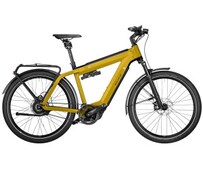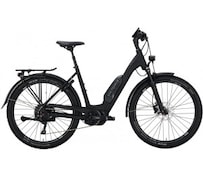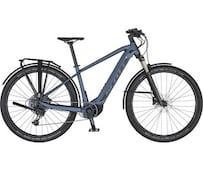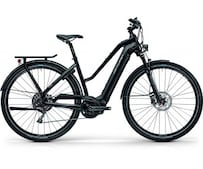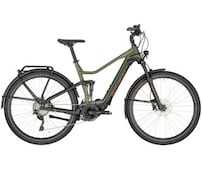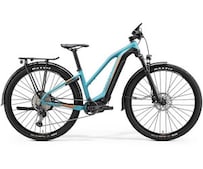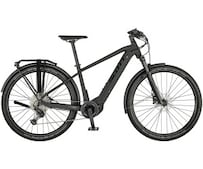Monocoque instead of tulips
Twin brothers Bob and Tom Schiller founded the Mokumono bicycle brand. The name is made up of “Mokum”, the local term for Amsterdam, and “mono” in reference to the monocoque frame used. Against the background of climate change, production should take place in the Netherlands instead of in the Far East. Frames and 65 percent of the components of Mokumono come from Europe and the share is expected to grow to 100 percent.
Picture from the production: Here the aluminum frame of a Mokumono e-bike is created.
The welcome side effect in times of the pandemic: while other manufacturers sometimes have delivery times of more than a year and retailers do not receive any goods, Mokumono is able to deliver.
Mokumono Delta C in Delta C optics
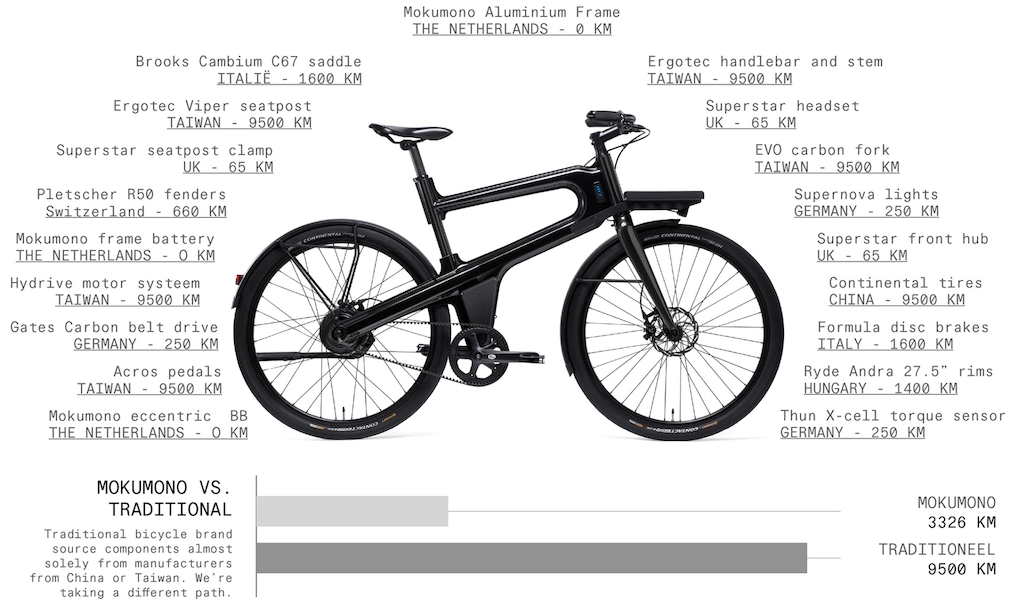
There is still a long way to go, but in terms of carbon footprint, Mokumono is already a lot further than other manufacturers.
The Mokumono Delta C is special in many ways. This starts with the place of production and ends not least with the design, which is characterized by the unusually shaped aluminum frame in a C or D shape (depending on which side you are looking from) and the large, fixed front luggage rack, which gives a certain cargo bike look at the front, but rear provides a sporty touch due to its absence. There are also mounts for panniers (up to 16 kg) on the rear wheel. The Supernova Mini 2 headlight is hidden under the “front panel” where you can always keep an eye on your luggage.
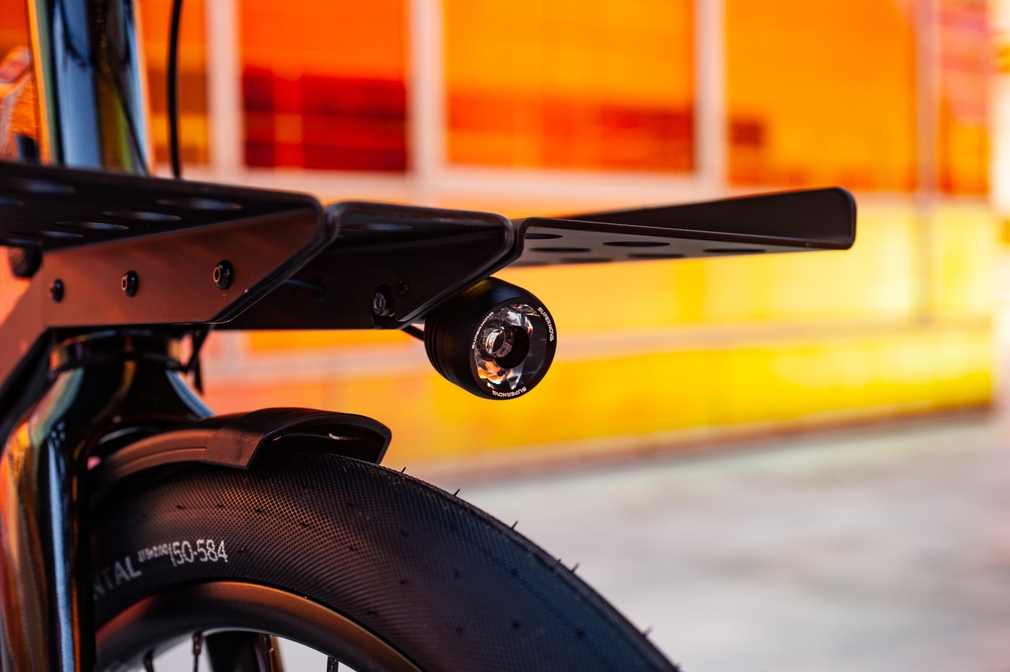
The bright supernova illumination comes from Germany and always shines straight ahead.
Side effect that takes some getting used to: Not only does the front luggage rack point stoically straight ahead, the headlight also only aims forward and does not follow the steering angle. At the back of the fender, a tiny LED tail light adds style and visibility.
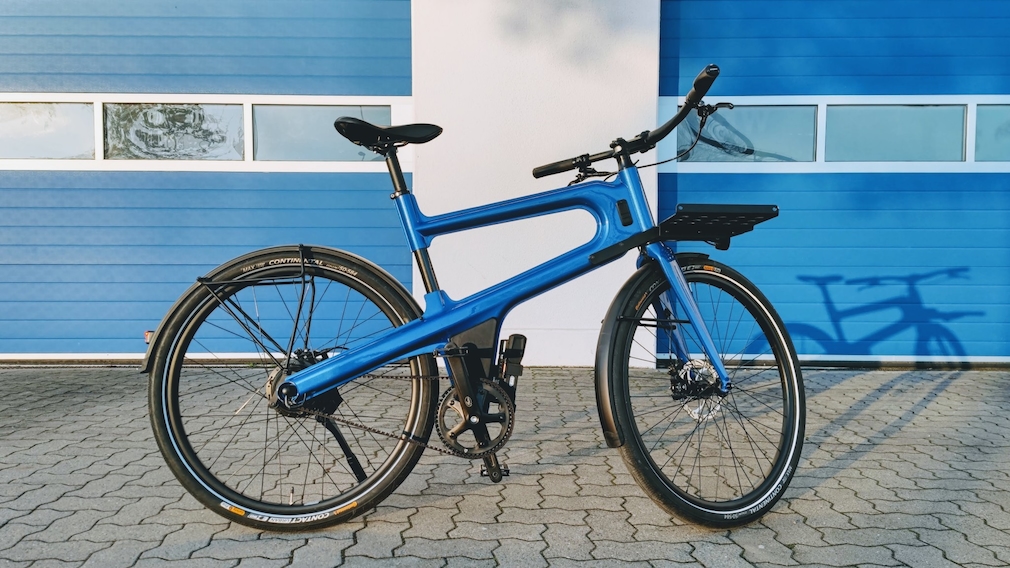
At the back it is sporty and simple without a luggage rack. That said, there are pannier mounts and a small but bright Supernova LED light.
drive and operation
The motor has an output of 250 watts and up to 50 Newton meters (Nm). Here, too, the comparison: A Cowboy 4 ST comes to 45 Nm, the VanMoof S3 in boost mode to 59 Nm and the massive Serial 1 Rush/Cty to 90 Nm. A Thun X-Cell torque sensor in the Delta C senses how hard you’re pushing and then doses the electric assist, which also depends on which of the three assist levels you’ve selected via the power button.
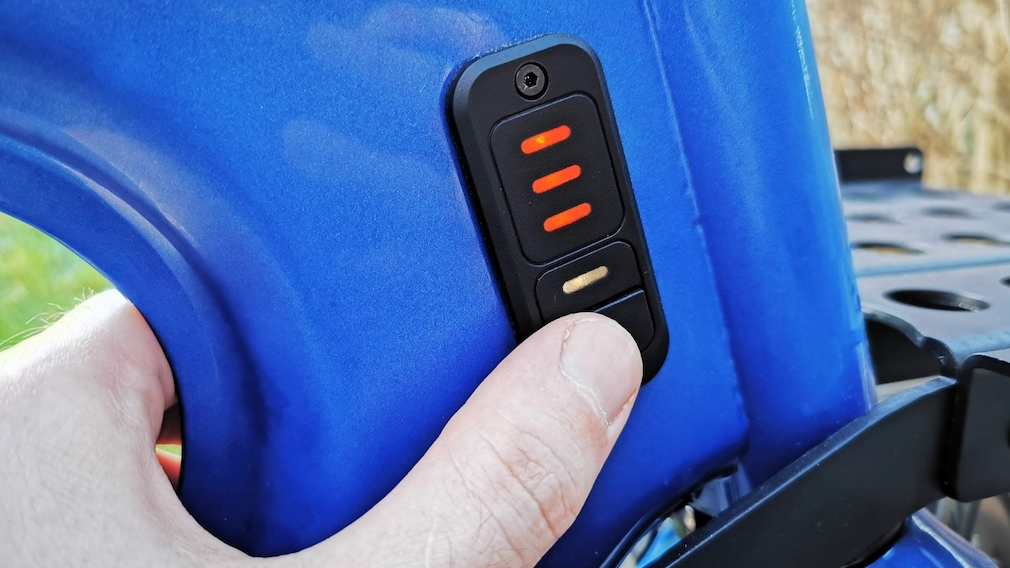
You can also use the on/off switch to set the strength of the support in three stages, symbolized by red bars.
A low-maintenance Gates carbon belt transmits the pedal power to the 27.5-inch Continental Contact Urban tires with friendly support from the rear wheel hub motor.
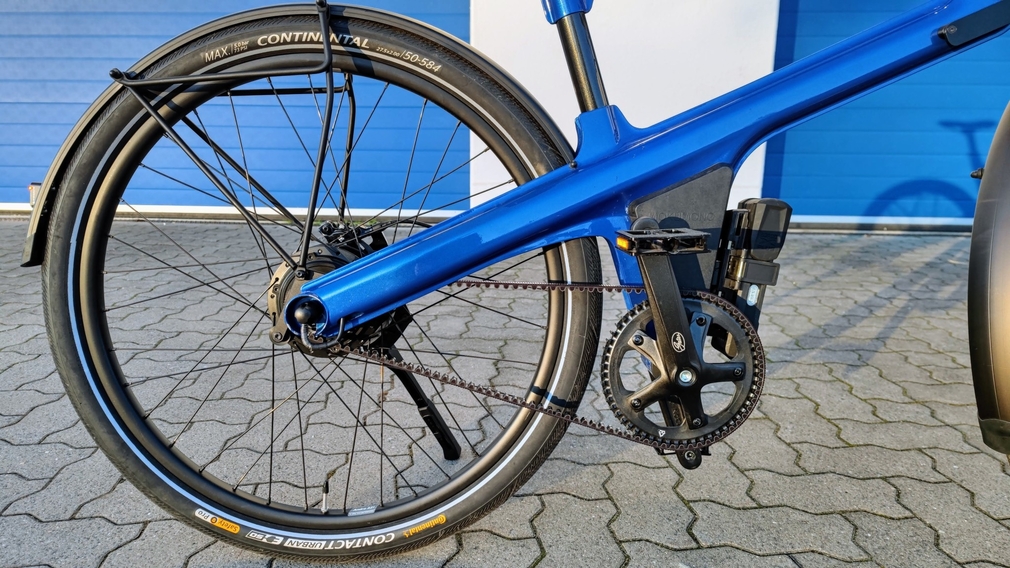
The Hydrive motor in the rear wheel delivers up to 50 Nm. The power transmission of the pedals takes place via a Gates carbon belt.
As usual, the support ends at 25 km/h, more is definitely possible and the power is also limited, but the cadence is then very high due to the lack of gears. You don’t have to worry about switching gears. However, the Mokumono Delta C suffers from a starting weakness even in the strongest support level. From a standing start, you have to step in properly before something happens. But it is precisely the first kick at the traffic light that makes city riding with e-bikes so convenient. The only thing you see from a Serial 1 Rush/Cty is the chic rear light – a light push and it comes off. The Delta C, on the other hand, starts off a little sluggishly, but is then pleasantly easy to ride – even without assistance. If the battery is empty, you can also do it without the electric boost. The feet rest on solid and non-slip metal pedals from Acros. Otherwise, without a speedometer, there is little to adjust or check. What is missed most is a display of speed and range. If you want to network and navigate, you have to install a mobile phone holder. However, you will not get a precise display of the remaining range. A bar lighting integrated in the frame gives an approximate indication of the capacity. However, this is not really easy to see when driving without contortions.
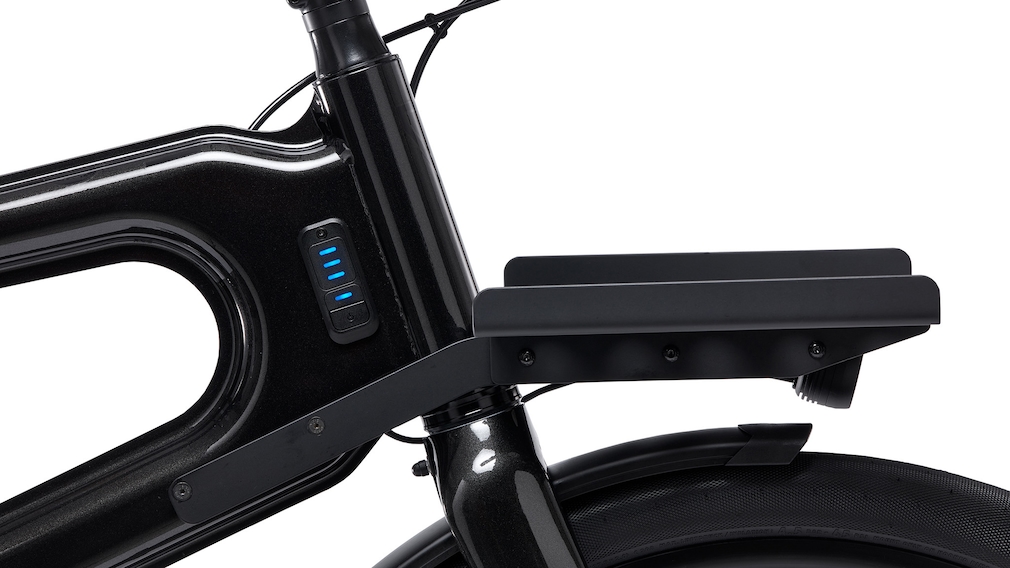
The LEDs in the frame roughly symbolize the charging of the battery.
battery and range
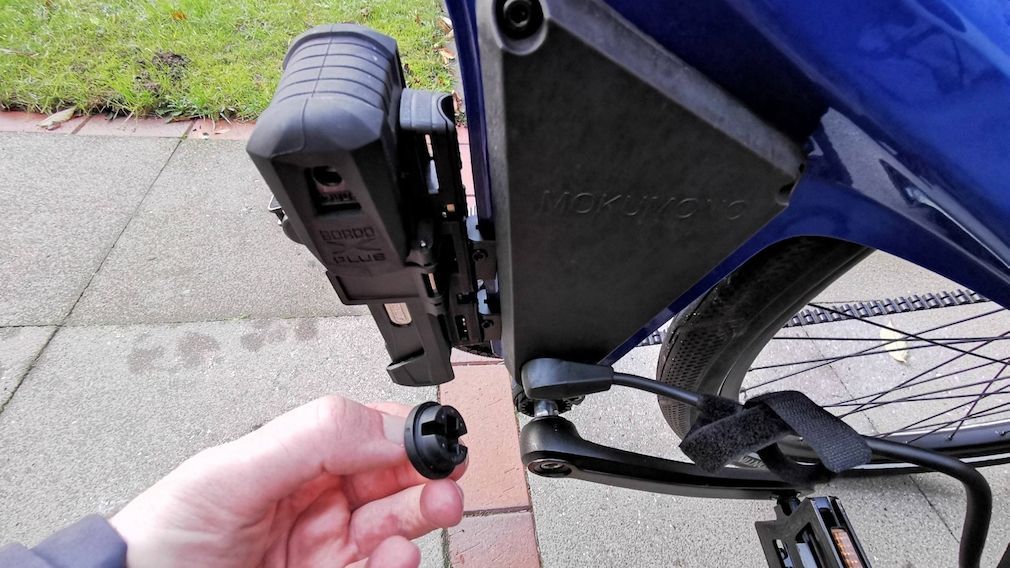
The charging port is located on the bottom of the battery, protected by a rubber cap that is not permanently attached to the Delta C.
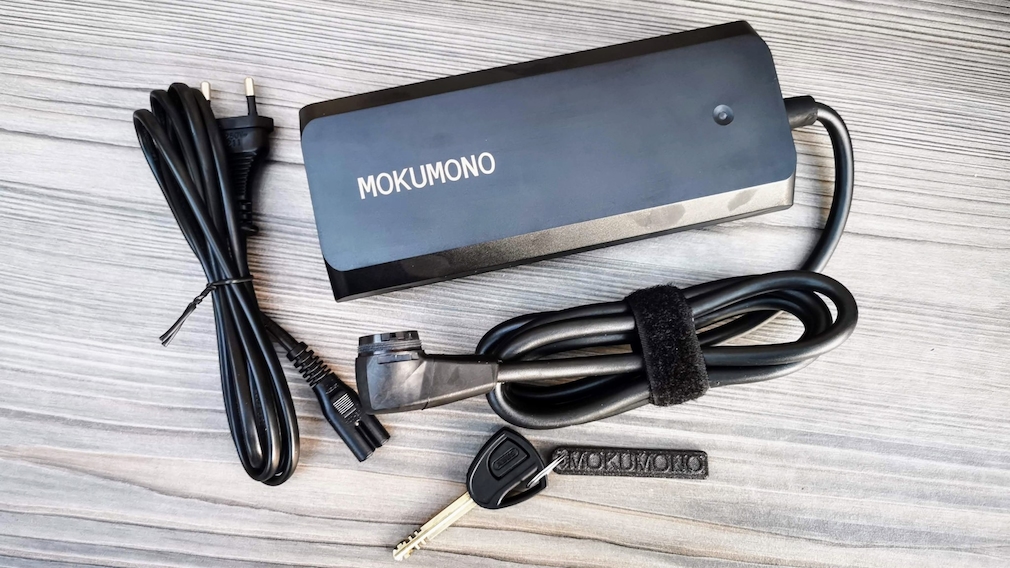
The charger of the Mokumono Delta C and the key of the optional Abus lock.
Comfort without suspension
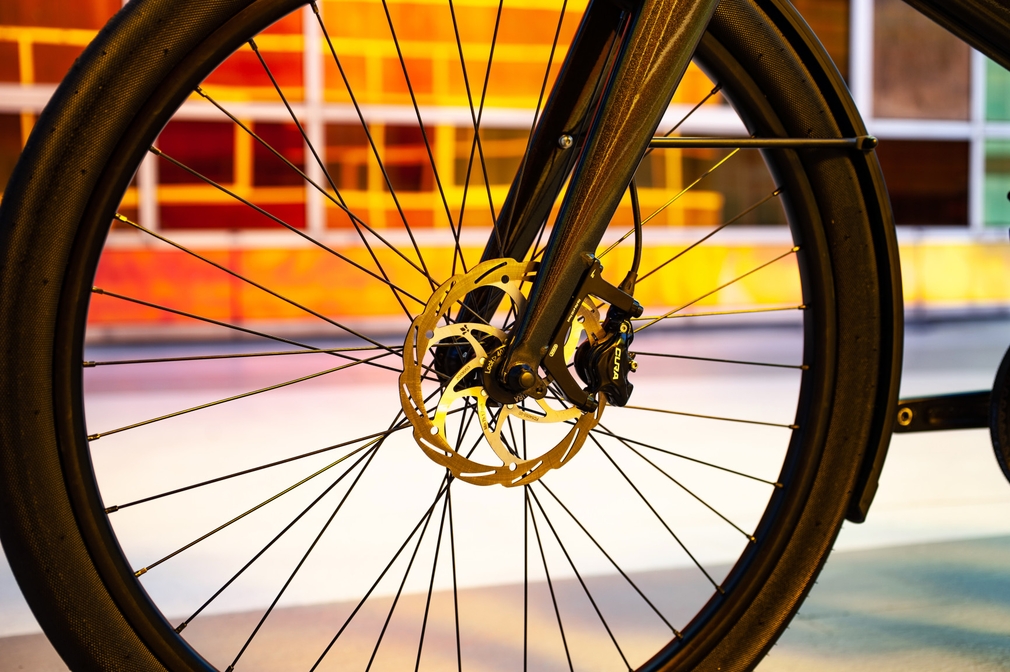
The Delta C stands on 27.5-inch aluminum rims covered with Continental Contact Urban.
You sit a little more upright and less sporty on the Delta C than on the Delta S. Despite the lack of suspension on the frame or saddle, the trip is quite comfortable. Only rough bumps in the road say hello. The hydraulic disc brakes always decelerate reliably and easily.
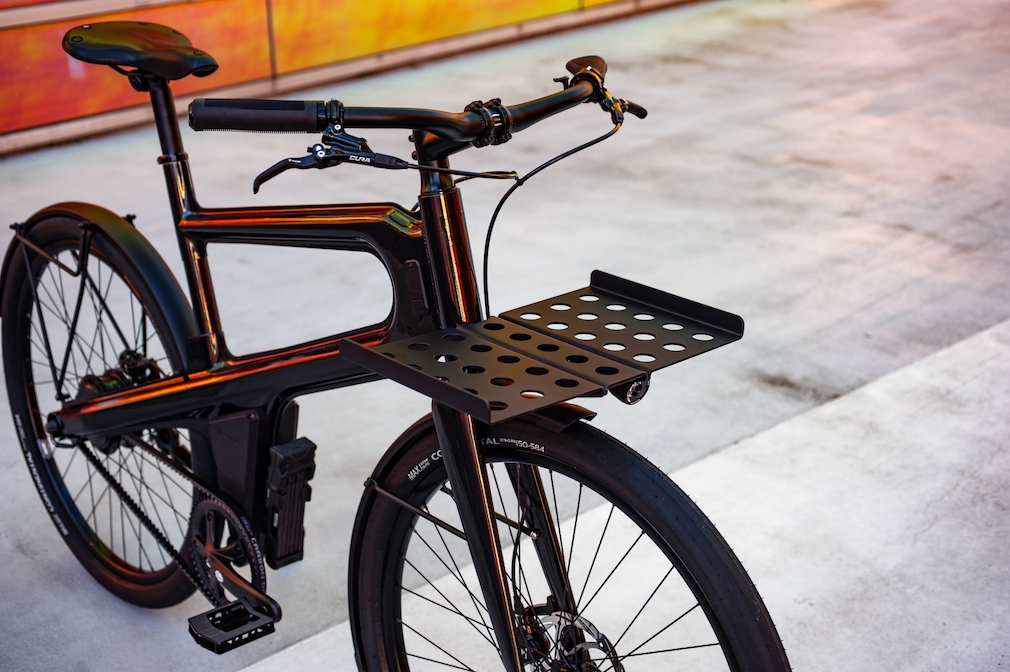
A clear workplace.
Furnishing
The Mokumono Delta C is equipped with a bell, lighting, stand and mudguards ready to drive, but at the same time it is limited to the essentials. There is no speedometer, alarm system or customizable driving programs that are otherwise known from e-bikes, nor is there an innovative kick-lock like VanMoof, but there is an optional solid folding lock from Abus, which has a smart bracket at the bottom frame finds its place near the battery and with which you can not only disconnect but also connect the bike.
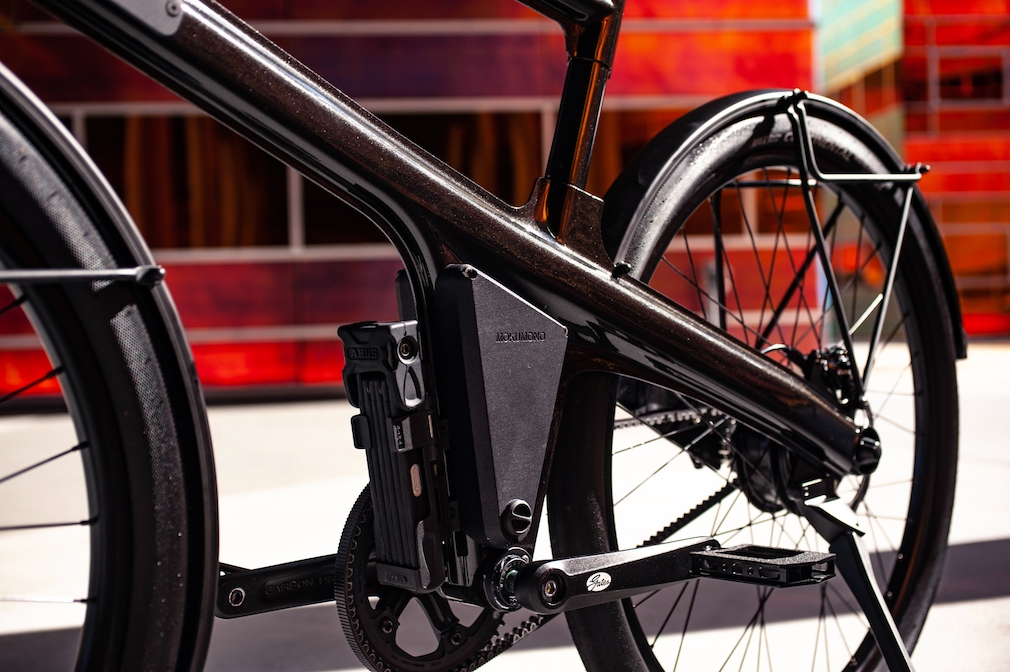
A massive Abus lock is attached in front of the battery.
Mokumono Delta C Pricing and Availability

The Mokumono Delta C and editor Michael Huch got along well.
Test conclusion: Mokumono Delta C
The Mokumono Delta C is not only a design eye-catcher, but also stands out from many other e-bikes. The small battery doesn’t allow for huge tours, but people who occasionally have to lug the bike up the stairs appreciate the comparatively low weight. Driving is fun, the power is sufficient for everyday use and you drive relaxed and briskly through the area. The simple operation and the complete equipment without frills contribute to the feeling of well-being. If you want to focus on the basics, this is the place for you. But if you want to keep an eye on all parameters and adjust the driving mode, this is a bit short. Fortunately, this also applies to the delivery time, which is possible with shorter distances thanks to the more sustainable concept.

